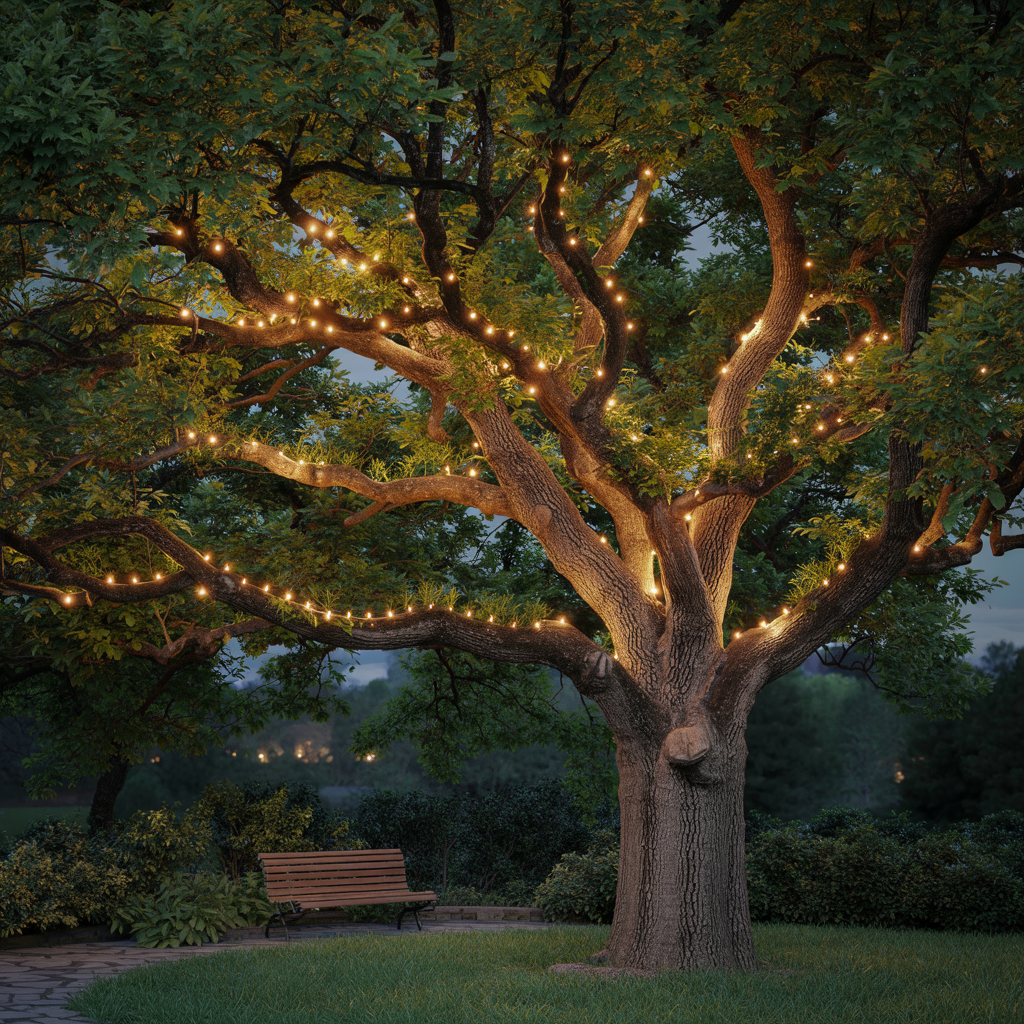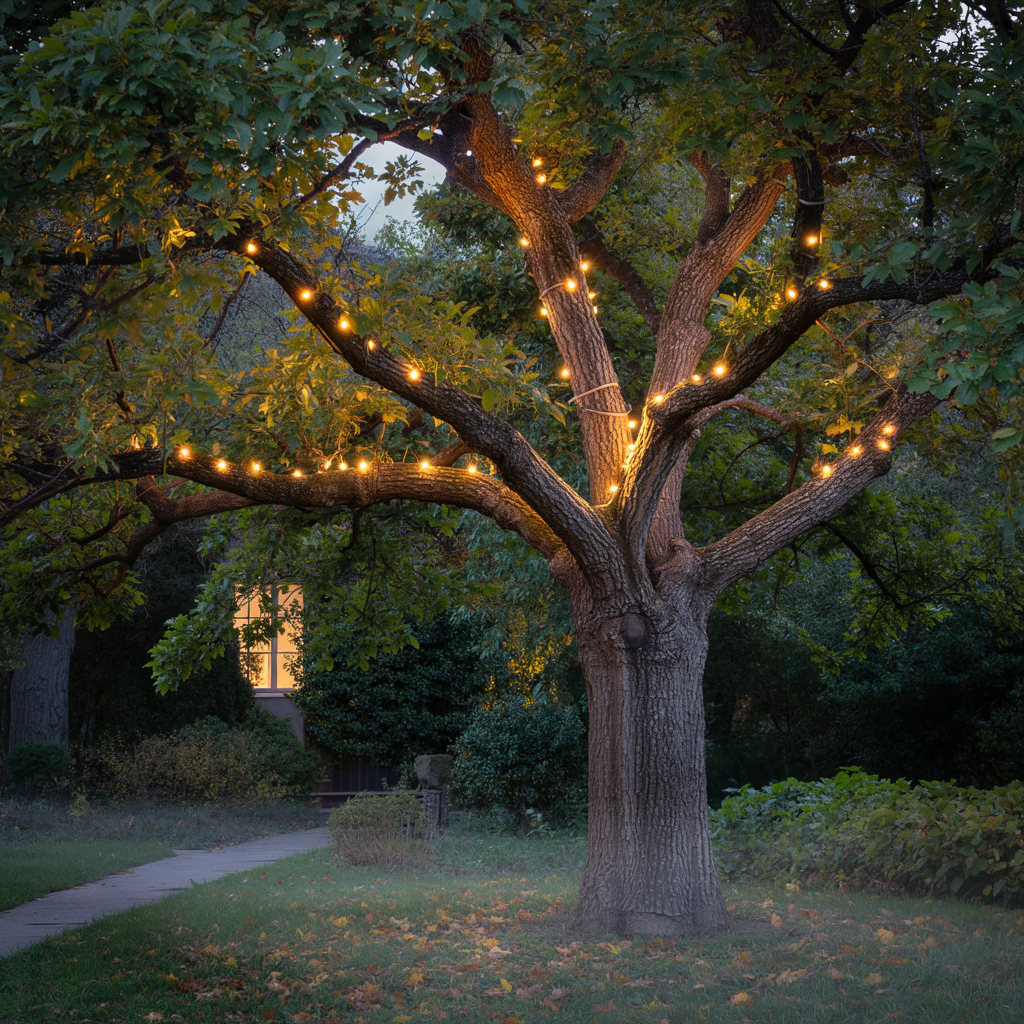Illuminating The Outdoors: How to Add LED Light to a Tree Branch?
Transforming your outdoor space with the warm glow of LED lights woven into your trees can create a magical ambiance. This guide explores how to add LED light to a tree branch, covering everything from choosing the right lights to ensuring safe installation. You’ll learn about different lighting types, power sources, installation techniques, and troubleshooting…
Transforming your outdoor space with the warm glow of LED lights woven into your trees can create a magical ambiance. This guide explores how to add LED light to a tree branch, covering everything from choosing the right lights to ensuring safe installation. You’ll learn about different lighting types, power sources, installation techniques, and troubleshooting tips, whether you’re a seasoned DIY enthusiast or a complete beginner.
Several LED light types are ideal for tree branches. String lights offer a classic look, while rope lights provide continuous illumination. Individual LED puck lights or fairy lights offer flexibility and diverse placement options. Consider the overall aesthetic you want to achieve.
Battery-operated lights offer convenience and portability, eliminating the need for electrical outlets. However, they require regular battery replacements. Mains-powered lights, while needing a power source, provide longer-lasting illumination and are generally brighter. Consider factors like distance to power sources and the size of the tree when making your selection.
How to Add LED Light to a Tree Branch?
Choosing the Right Brightness and Color Temperature

LEDs offer a wide range of brightness and color temperatures (measured in Kelvin). Warmer colors (2700K-3000K) create a cozy atmosphere, while cooler colors (5000K-6500K) provide brighter illumination. Select a brightness and color that suits your desired mood and visibility needs. Consider using a dimmer switch for greater control over the intensity.
Planning Your LED Tree Lighting Project
Assessing Your Tree and Desired Lighting Effect
Before beginning, carefully assess your tree’s size, branch structure, and overall health. Decide on the lighting effect you desire—subtle accent lighting, a dramatic display, or something in between. This will influence your choice of lights, quantity, and placement.
Safety Considerations: Electrical Hazards and Tree Health
Always prioritize safety. Avoid overloading circuits, use weatherproof lights, and ensure proper insulation to prevent electrical hazards. Be mindful of the tree’s health; avoid damaging branches or bark during installation. Use non-invasive fastening methods.
Choosing the Right Tools and Materials
Gather the necessary tools: wire cutters, zip ties, cable clips, measuring tape, and potentially a drill with appropriate bits. You’ll also need the LED lights, power source (batteries or extension cord), and any mounting hardware as needed.
Installing LED Lights on Tree Branches

Step-by-Step Guide: Battery-Operated String Lights
1. Carefully drape the lights along the branches, ensuring even spacing. 2. Use zip ties or cable clips to gently secure the lights to the branches without causing damage. 3. Tuck excess wire neatly to prevent tripping hazards. 4. Test the lights to ensure they are functioning correctly.
Step-by-Step Guide: Mains-Powered Rope Lights
1. Plan the route of the lights, considering the power source location. 2. Secure the lights using appropriate clips or fasteners along the planned route, paying close attention to how they will be hidden or incorporated into the branches. 3. Ensure any connections are well-insulated and safe from the elements. 4. Test the lights thoroughly.
Working with Different Tree Types and Sizes
The installation process may vary slightly depending on the tree type and size. Smaller trees require less planning and material, while larger ones may benefit from a more detailed plan. Always exercise caution when working at heights; consider using a ladder or seeking assistance.
Advanced Techniques and Considerations
Creating Custom Lighting Designs
For a unique look, experiment with different lighting patterns and arrangements. You can create stunning effects by layering different types of lights or using colored lights to highlight specific areas of the tree. Consider using programmable controllers to create dynamic lighting shows.
Integrating LED Lights with Other Outdoor Lighting
Combine your tree lighting with other outdoor features, such as pathway lights, spotlights, or landscape lighting, to create a cohesive and visually appealing outdoor space. Ensure that all lighting elements complement each other in terms of style and color temperature.
Maintaining and Troubleshooting Your LED Tree Lights
Regularly inspect the lights for any damage or loose connections. Replace any faulty bulbs promptly. For mains-powered lights, ensure the wiring remains protected from the elements. Properly winterizing your lights can extend their lifespan.
Benefits of Using LED Lights on Trees
Energy Efficiency and Cost Savings
LEDs are highly energy-efficient, consuming significantly less power than traditional incandescent bulbs. This translates to lower energy bills and a smaller carbon footprint.
Aesthetic Appeal and Enhanced Ambiance
LED lights can create a warm, inviting, and magical atmosphere in your outdoor space, enhancing its beauty and charm. The variety of colors and styles allows for extensive customization.
Safety and Durability
LEDs generally produce less heat than other types of bulbs, reducing the risk of fire hazards. They are also quite durable, capable of withstanding various weather conditions.
Limitations and Potential Issues
Cost of High-Quality LED Lighting
While LEDs save money in the long run, the initial cost of high-quality, weatherproof outdoor lights can be relatively high compared to cheaper alternatives.
Installation Challenges and Potential for Damage
Installing lights on tree branches can be challenging, especially for larger trees. Improper installation can lead to damage to the tree or the lights themselves.
Maintenance Requirements
While LEDs are durable, they still require occasional maintenance, such as bulb replacement and cleaning. Ignoring this could lead to premature failure or safety hazards.
Comparing Different LED Light Options
String Lights vs. Rope Lights: Pros and Cons
String lights offer a classic, whimsical look and are easy to install; however, they’re less bright than rope lights. Rope lights provide continuous illumination and are excellent for outlining shapes, but can be more challenging to install.
Battery-Powered vs. Mains-Powered: A Detailed Comparison
Battery-powered lights are convenient and portable; however, they require regular battery changes and might have limitations in brightness and run time. Mains-powered lights offer brighter and more consistent illumination but require access to power.
Choosing the Right LED Light Type for Your Tree
Considerations for Different Tree Species
The type of tree can influence the best type of light to use. For example, delicate branches might require lighter, more flexible lights to avoid damage.
Matching Lights to Your Overall Landscape Design
Choose LED lights that complement your existing landscape design. Consider the style of your home, the color scheme of your garden, and any other outdoor lighting elements.
Frequently Asked Questions
What types of LED lights are best for outdoor use?
For tree branches, string lights, rope lights, and individual puck lights are popular choices. Ensure they are rated for outdoor use, meaning they are weatherproof and can withstand various temperatures and conditions.
How do I safely install LED lights on tree branches?
Use non-invasive fastening methods like zip ties or cable clips. Avoid damaging branches or bark. For mains-powered lights, ensure proper insulation and protection from the elements. Always prioritize safety when working at heights.
How can I prevent damage to my tree while installing lights?
Use soft, flexible materials to secure the lights. Avoid wrapping lights tightly around branches. Use gentle pressure when attaching clips or ties. Inspect the tree regularly after installation for any signs of stress or damage.
How long do LED tree lights typically last?
The lifespan of LED lights varies, but high-quality lights can last for many years, even with outdoor use. Proper maintenance and protection from the elements greatly extend their longevity.
Can I use a dimmer switch with my LED tree lights?
Many LED lights are compatible with dimmer switches, though it’s essential to check the specifications of both your lights and dimmer switch to ensure compatibility. Using a dimmer can enhance ambiance and extend battery life.
Final Thoughts
Adding LED lights to your tree branches is a fantastic way to enhance your outdoor space, creating a magical ambiance and improving curb appeal. By carefully considering the factors discussed in this guide—from choosing the appropriate lights to safe installation techniques—you can transform your yard into a stunning spectacle of light. Remember, safety and proper planning are key to a successful project. Now that you’re equipped with the knowledge to light up your trees, go ahead and start illuminating your nights! With a bit of creativity and careful planning, you can craft a beautiful and captivating outdoor lighting display that will enhance your home’s aesthetic for years to come.

